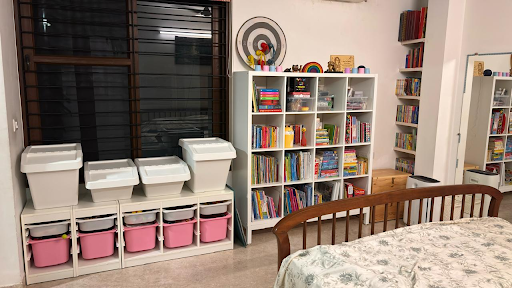Having an empty laundry basket is the best five seconds of the week. If you’ve laughed and nodded in agreement, you’re not alone. In all honesty as funny as it sounds, it isn’t. An endless laundry cycle and the pile-up of washed clothes can be quite stressful. It’s like getting through the toughest part of a job, to find yourself only halfway through. In this blog, we will discuss how to manage laundry at home and share with you some practical laundry organization tips, which will help you see the bottom of the bin.
1. Place visible drop zones and sorting hampers
It’s all about making the process simpler. This is especially important if you’ve children at home. To ensure they don’t drop their dirty laundry on the floor, which will eventually go missing, place visible drop zones in their rooms, specifically near the bathroom or changing areas so that clothes go directly into the basket. Ideally, every bedroom must have a laundry basket, so that soiled clothes stay where they should.
You can also place sorting hampers for certain clothes, such as coloured clothes, whites and lights, dry clean only, etc., which can be a great timesaver. Keep this in the laundry room, if you have one, or get a portable one, perhaps with castors, to wheel it from room to room and pick out specific items.
I also apply the sorting hamper rule to clean clothes that need to be ironed. Whether you iron your clothes yourself or send them out for ironing, make sure there is a box assigned to these clothes and everyone in the house knows where it is.
2. Designate space for once-worn clothing
The biggest challenge of laundry management at home is clothes that are worn once. Every homemaker struggles with this. The easiest way to manage once-worn clothes, which are neither dirty nor clean, is to find a dedicated space for them. This could be inside the wardrobe on a separate shelf or drawer, or in a box or garment bags. You could also hang them inside out or use a different colour hanger to tell the once-worn clothes from the fresh ones. Jeans can be hung on hooks behind doors if they occupy too much space in the cupboard.
The reason why you need to designate a space for once-worn clothes is to ensure open surfaces, like beds and chairs, don’t become drop zones, and remain clutter-free. It also helps you remember what must go in the wash and what can be worn again.
Extra tip: Here’s what you can do for party wear or workout clothes that need to air dry, – leave a hanger outside your wardrobe as a reminder to hang clothes to air dry overnight when you get back home. The next morning, put the clothes into the wardrobe or washer, as needed.
3. Have a grip on the number of laundry loads
Reducing laundry loads is not only good for the planet, but it’s also an excellent way to manage and organize your laundry at home. There are many ways to do this. Choose sturdy fabrics that make laundry easier. Teach your family that some clothes can be worn more than once – it’s a lesson especially useful for children. Tell them about the once-worn rule, and you can ensure your weekly laundry loads are reduced.
4. Put clean laundry where it belongs
What’s harder to manage than dirty laundry? Clean laundry!
The rule of thumb in laundry management is to put away clean laundry immediately. Make sure you fold clean clothes as soon as they are dry, and don’t wait to put them away. Transfer them to their final destination – the wardrobe – as soon as you’re done folding them. This is a great way to keep spaces clutter-free and a blessing when you want to find that perfect shirt for your trousers before your big meeting!
5. Assign days for specific items
Create a laundry system – this is a beneficial method for a large family. Keep aside days to wash specific items like bed linen, towels, formal wear, etc. Ensure everyone in the family is aware of the system and the items come in for washing from different rooms on their assigned days.
If there are delicate clothes that need to be hand-washed, assign a day for those as well, so that it becomes a part of your laundry routine.
6. Have an organized drying system
Indian weather calls for an efficient clothes-drying system that can be moved indoors from outdoors during the monsoons, without creating a messy appearance. Besides the traditional clothesline, there are options such as foldable drying stands, pulley-operated drop-down drying racks, wall-mounted stands, etc. that ensure your laundry drying system transitions from sunny days to rainy days with ease.
7. Keep laundry supplies accessible
Detergents, stain removers, colour guards, whiteners, fabric conditioner and softeners – these are items you’ll need at arm’s length when you’re starting a wash cycle. Create an accessible storage system right next to your washing machine so that you don’t have to go looking for them. Save time and energy; plus, it’s great when you want to follow point number 8, given below.
8. Split the job
It’s not rocket science, so don’t treat it like one. Make sure everybody, including the kids, knows how to operate the washing machine, the type of cycle for different clothes, and where the laundry supplies are. Managing laundry is a life skill everyone should have, and splitting the job makes it easy for all family members.
Check out my other blogs for tips and tricks to declutter and organize your home. If you have any questions, drop them in the comments section.


